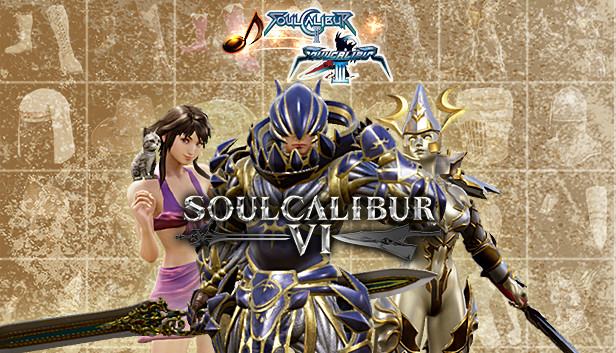
Which leads me to the big new thing: the reversal edge. With ring-outs and multi-directional movement the stakes are often higher, and there’s pretty much a counter for everything. Making positioning matter is also another Soulcalibur staple. It’s a challenge, absolutely, to balance reach, power, and a ton of frame data around weapons, but Project Soul has done it time and time again. To this day there still aren’t many weapon-based fighters. It’s awesome as it really manages to feel like its own game: like one of many elements you’d find in a ’90s fighter like Ehrgeiz.ĭespite not changing a whole lot Soulcalibur is still relatively fresh in the fighting game circuit. It has its own narrative, world map, item system, and customization options. It’s lore-heavy with dialogue choices that are mostly fluff, with custom character creations to fight.

Their main use here is in the Libra of Soul mode: an RPG based on the create-a-character system. It pretty much rules and I was immediately inspired to create my own Wack Pack of creatures. You can even kit one of these oddities out with a “narcissistic” voice that proclaims they’re beautiful before choosing one of 20 fighting styles based on existing characters. Lizardmen, mummies, skeletons, sculptures, goblins (Malefics), cyborgs (Automatons) and demons (Darksiders) are fair game. The character creator is off the chain, offering scores of races that completely veer off course from the typically human-centric notions of old. I’m going to use him to introduce people to the game. Quen (a sign that lets Geralt rush down an enemy while putting up a shield) is a great example of an ability that will speak to new players (and Soulcalibur in general allows for many answers to projectile spam/zoning with its aforementioned freedom of movement). He’s kind of an all-comer mid-ranged character and should appeal to just about any fighting game player regardless of their familiarity with the source material. Geralt’s style is based around “signs,” which can basically be considered spells. While the idea of Yoda spinning around with a lightsaber is anachronistic enough to turn people off, Witcher‘s medieval focus is inversely grounded. Geralt from The Witcher series is a fine (and relevant) guest character. He’s in the waiting room of the lab right now, but as more tech is discovered I may bring him into the fold. The more I played with him the more depth I discovered. He can use his avenger stance to separate the swords at will outside of a combo and utilize a ton of movement-based abilities to sneak around the arena. Grøh’s “single blade that splits into two” gimmick has been done before, but the way Soulcalibur stylishly executes it is something unique to this series. Grøh is shonen incarnate, and although he’s perhaps the least impressive new fighter on paper, there’s still merit to his inclusion.

His odd mixup-based fighting style, comprised of counter-like maneuvers, ranged attacks, and heavy-hitting close-quarters combos makes him a welcome addition. His blue and red hues kind of codify Soulcalibur VI‘s loudness. Project Soul is embracing their inner silliness here. There’s a great balance here without having to resort to clones As for the new crew: I absolutely love the decadence of Azwel, the “Leader of Humanity.” He’s an edgelord and a perfect fit for a game that already held the edge crown with Nightmare. Let’s start with the cast.Īlthough a few classic characters are missing, VI mostly hits the mark and brings back several no-shows from V, like Sophitia and Talim. But it also steers the ship back in the right direction for casual and hardcore fans alike. It’s still absolutely gorgeous inside and out with an appropriately regal soundtrack that’s so incredible that I often just leave it on as I’m making a sandwich or preparing for a match. Soulcalibur VI rights a lot of the wrongs from six years ago. When in doubt, put a Witcher in your game (or a Jedi, or a Hero of Hyrule, or an assassin, or Hellspawn, or…you get the point).
SOULCALIBUR VI SOUNDTRACK SERIES
After gutting the beloved core cast and a number of single-player modes the series felt hamstrung, to the point where some felt that it could never come back. Bandai Namco has a lot to answer for after 2012’s Soulcalibur V.


 0 kommentar(er)
0 kommentar(er)
